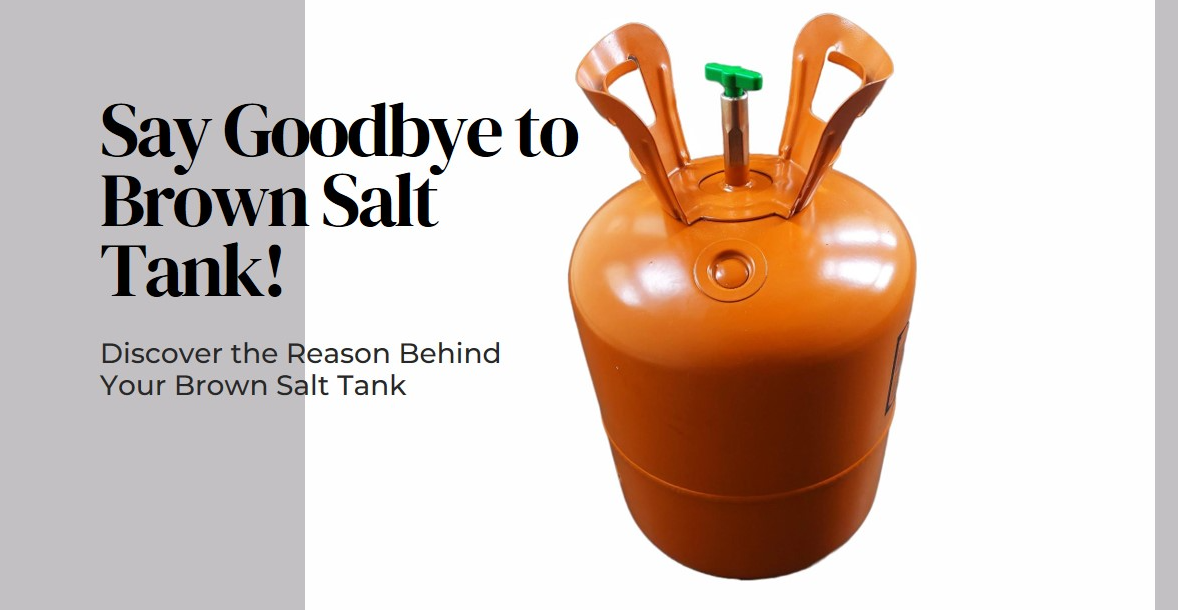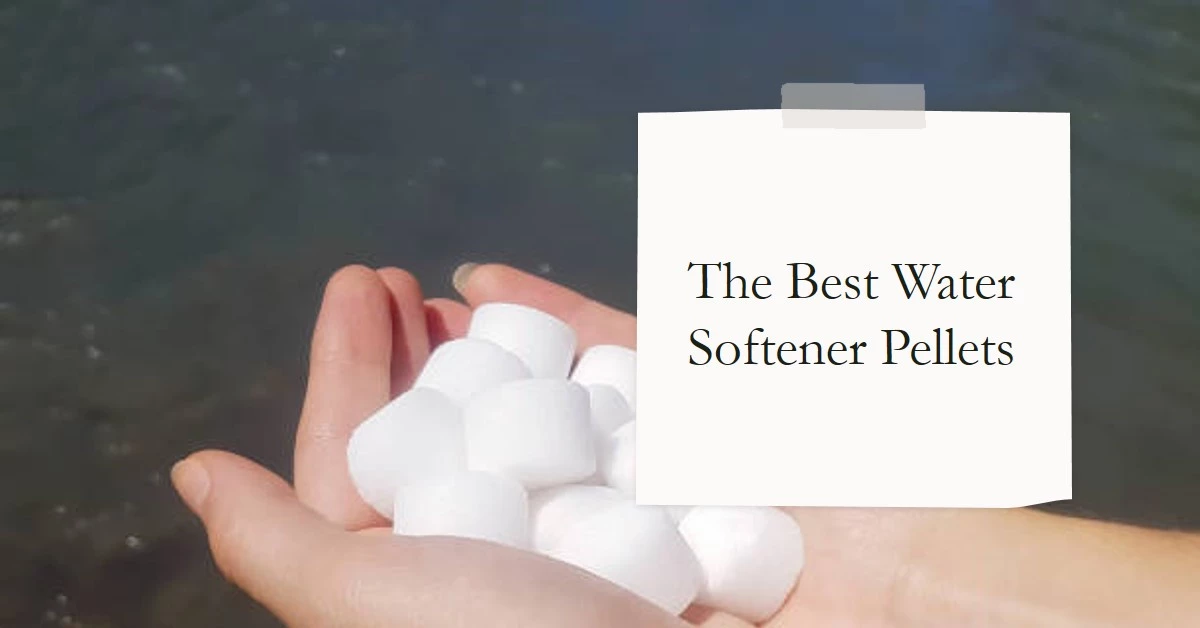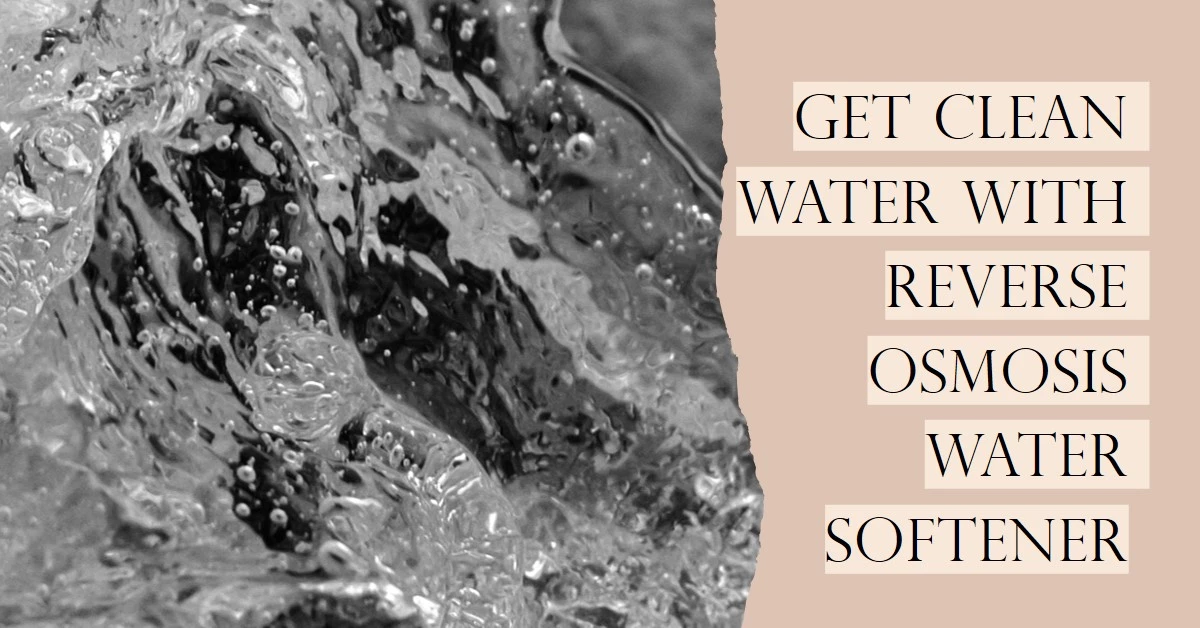If you have noticed that your water softener’s salt tank has turned an unsightly brown color, you’re likely wondering what caused it and how to fix it. A brown salt tank is actually a common issue that can occur for various reasons. The discoloration is often indicative of a problem with water quality, softener maintenance, or the salt itself.
What Causes a Brown Water Softener Salt Tank?
There are a few key culprits when it comes to brown water softener salt tanks:
Iron in the Water Supply
One of the most frequent causes of salt tank discoloration is a high concentration of iron in your home’s water supply. Iron naturally occurs in many water sources and tends to oxidize and turn brown when exposed to air. As the iron-rich water cycles through your softener, the iron oxide builds up as a brown residue inside the salt tank.
Water softener salt tanks are prone to rusting and corroding when exposed to high levels of iron in the water. Even small amounts of iron over time can cause pronounced discoloration and staining. Well water and rural water supplies often contain higher iron content that can clog and dirty salt tanks.
Improper Maintenance and Cleaning
If salt tanks are not periodically cleaned and maintained, mineral scale and sediment will accumulate. Over time, this buildup can also cause brown staining. Old caked on salt, dirt, grime, and hard water deposits can discolor the plastic and resin materials inside the tank.
Infrequent replacements of the salt can allow contaminants to concentrate, leading to oxidization. Salt tanks should be scrubbed and disinfected every 3-6 months to control staining. Neglecting this maintenance provides an environment for grime and discoloration to develop.
Using the Wrong Type of Salt
Certain varieties of water softener salt contain higher amounts of minerals and impurities that can contribute to brown staining of tanks. Salt that is high in ferrous iron content is especially problematic. Using coarse rock salt or “solar salt” instead of purified salts can lead to increased sedimentation and discoloration over time.
Age and Corrosion
As salt tanks age, plastic and resin materials can degrade, crack, and corrode. Older tanks made of metal may rust and cause brown leaching into the salt. Age-related corrosion of tanks can also provide more surface area for mineral scale and sediments to adhere to.
Dangers and Risks of a Brown Water Softener Salt Tank
While a brown salt tank may seem like just an aesthetic nuisance, it’s an issue you don’t want to ignore for too long. Here are some of the major risks and dangers associated with discolored softener tanks:
Contamination and Impurities in Water
The brown staining in your tank is likely due to high concentrations of iron, sediment, dirt, or other contaminants. As these particles dislodge from the tank, they can potentially get into your water system and supply. This could negatively impact the quality, taste, and color of the water in your home.
Drinking water with high levels of iron and sediments could have health consequences and should always be avoided. What may seem like only a tank issue could be indicative of larger water quality problems.
Decreased Efficiency of Softener
All of the grime, gunk, and buildup in a brown tank can clog valves, lines, and resin beads. This prevents your softener from operating at full capacity. You’ll notice decreased efficiency through scale buildup, low water pressure, and ineffective softening.
Allowing contaminants and sediments to flow freely can damage internal parts over time as well. Like any appliance, a water softener functions best when kept clean and maintained.
Potential Health Concerns
In addition to basic dirt and contaminants, brown tanks may harbor potentially harmful bacteria and fungi. Water from an unclean tank can increase your exposure to an array of pathogens, toxins, and microorganisms.
While the risk is low, those with compromised immune systems may want to exercise additional caution if their softener tank appears contaminated. Consulting with your doctor is wise if you have any concerns over water quality.
How to Clean a Brown Water Softener Salt Tank
If your water softener salt tank has turned brown, here is a step-by-step guide to cleaning and restoring it:
Supplies Needed
- Softener salt tank cleaning solution (or mix of 1 tbsp chlorine bleach and 1 gallon water)
- Old towel
- Medium bristle scrub brush
- Garden hose
- Bucket
Step 1 – Turn Off Water Softener
Begin by shutting off the water supply to your softener system and unplugging the unit from the power source. This prevents any water from entering the tank while you clean it.
Step 2 – Remove the Salt Tank
Carefully detach the salt tank from the softener system. It is typically connected by plastic tubing or piping. You may need to consult your owner’s manual for exact instructions on properly removing your tank.
Step 3 – Empty Remaining Salt and Brine
With the tank detached, empty any remaining salt, sediment, and brine from the tank. You may need to rinse it under running water to wash out solidified buildup. Wear gloves when handling tank contents.
Step 4 – Mix Cleaning Solution
In a bucket, mix up the cleaning solution according to the manufacturer’s directions. You can make your own basic solution with one tablespoon of chlorine bleach added to one gallon of warm water.
Step 5 – Soak and Scrub Tank
Place the tank in an area where you can soak and scrub it. Pour the cleaning mixture into the tank, allowing it to soak for 5-10 minutes. Use a scrub brush to vigorously clean the sides, top and bottom of the tank.
Step 6 – Rinse Thoroughly
Once scrubbed, rinse the tank thoroughly with a garden hose or faucet. Flush the interior until the rinse water runs clear and no soapy residue remains.
Step 7 – Allow to Dry Fully
After rinsing, set the tank in an area where it can completely air dry. Do not reinstall the tank while it is wet, as remaining moisture can breed bacteria.
Once your tank is clean, sanitized and fully dry, you can reattach it to your water softener. Fill it with fresh salt, run a regeneration cycle, and resume use as normal. You may need to repeat the cleaning process multiple times if staining is severe. Replacing the tank may be required if cleaning efforts are ineffective.
Preventing Future Salt Tank Discoloration
To help prevent your water softener’s salt tank from turning brown again, incorporate these maintenance practices:
- Use Only Recommended Salt Types: Avoid off-brand or rock salts. Purchase high quality pellet or solar salts specifically formulated for softeners. Look for purified, additive-free options.
- Change Salt Regularly: Empty and refill your tank with fresh salt every 2-3 months. Do not let old salt sit for long periods.
- Clean Tank and Brine Every 6 Months: Schedule biannual cleanings to prevent scale buildup. Scrub the salt tank and brine tank.
- Inspect Tank Monthly: Quickly spot early signs of discoloration by peeking in the tank each month. Address at first hints of brown.
- Flush Softener Lines: Periodically run a manual regeneration cycle to flush sediment from internal lines.
- Consider a Water Purification System: Whole home filters and sediment filters help remove contaminants before they enter your softener.
- Use a Water Softener Cleaner: Supplement normal cleanings with a monthly additive to prevent staining.
Diligent tank maintenance and high-quality salts are vital for preventing brown water softener tanks. Be proactive with inspecting and cleaning your system to maximize efficiency and water quality. Consider installing pre-filters if your water supply has high sediment or iron levels.
When to Call a Professional for Your Softener
While DIY cleaning methods may restore your brown salt tank, some instances do require contacting a professional:
If tank staining and discoloration persist after thorough cleaning and salt replacement, underlying issues may be at play. A water quality specialist can test your water to determine if high iron, manganese or other dissolved minerals are present. They can suggest remediation options based on your source water.
Severe corrosion, cracking, or deformities within the tank likely indicates age or material fatigue. A pro can assess if tank replacement is required as opposed to just cleansing and maintenance.
Your softener may need servicing if low water pressure, efficiency problems, or error codes arise. A brown tank is usually symptomatic of larger functionality problems. Professionals have specialized expertise in diagnosing and servicing malfunctioning units.
Specialized disinfection and removal of hazardous sediments like bacteria, lead, and asbestos should be left to qualified experts. Do not handle severely contaminated tanks without taking safety precautions.
Inability to detach the tank for cleaning is another situation where you’ll need a pro’s assistance. Improper tank removal often leads to broken parts, leaks, and damaged lines.
Seeking professional opinions can also provide you with personalized solutions for your home’s unique water chemistry and softening challenges. Be sure to hire certified technicians for any salt tank replacements or major softener repairs.
Key Takeaways: Brown Water Softener Salt Tanks
To recap, here are the key things to remember about managing brown water softener salt tanks:
- Discoloration is commonly caused by iron, insufficient cleaning, or cheap salt varieties.
- Brown tanks can contaminate water, harm efficiency, and breed bacteria.
- Tanks should be detached, scrubbed, sanitized, and completely dried every 6 months.
- Use only high-purity pellet or solar salts recommended for softeners.
- Inspect and flush systems monthly to stay ahead of staining issues.
- Consider installing pre-filtration to remove problem particles before the softener.
- Call professionals for testing assistance if stains persist after maintenance.
- Seek expert help for corrosion, cracking, or inability to detach the tank.
- Schedule routine professional servicing to keep softeners operating optimally.
With vigilant tank maintenance and high-quality salts, you can avoid the headaches of a brown water softener tank. Address color changes right away before small issues lead to bigger functionality problems. Take preventative steps now to keep your water soft and pristine.





